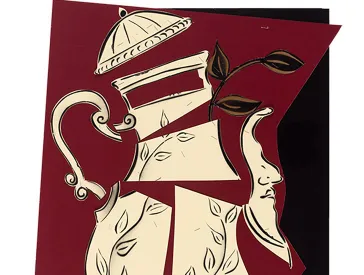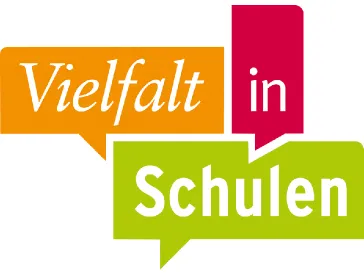Exhibitions are Created by Museums, Right? On the Varied Significance of Exhibitions for Schools
Working Group Report
Visitor participation is of growing interest to museums. The possibilities are endless. We focused specifically on curation: the Jugend Museum Berlin (Berlin Museum for Young People) integrates residents of the district of Schöneberg into its work. The Jewish Museum Berlin helps schools develop their own exhibitions. Teachers reported on the different ways they have used exhibition objects in the classroom and together we discussed all the things that a participatory exhibition can change. On the one hand, it transforms the way museums work by promoting participation and identification; on the other, it enables students and teachers to take an active role on a visit to an exhibition.
The working group was led by Dr. Diana Dressel with contributions by
- Petra Zwaka, Jugend Museum Berlin (Berlin Museum for Young People)
- Silvia Linnenbürger, B. Traven High School, Berlin
- Jutta Dücker, Ernst Schering High School, Berlin.
Petra Zwaka: “VILLA GLOBAL – The Next Generation,” a Participatory Project at the Jugend Museum Berlin
In 2011, we designed a three-year participatory project entitled Heimat Berlin: Migration History for Children. The special challenge was to develop programs to which young people could contribute with their own experiences. Using a local example, we highlighted the many ways immigration has changed the district of Schöneberg over the centuries and how, conversely, the city has influenced immigrants. We presented the history of migration not as special case, but as an integral part of the historical development of Berlin.
Our workshops have shown that children and young people need space and creative methods to work individually on their topics. Forms of open learning allow them to develop individual approaches and realize their potential – or recognize it for the first time. By treating the young people as equals, taking their ideas seriously, and, above all, viewing their results as exhibition-worthy, we shared the experience of everyone who gives young people the opportunity to design a project: proud students who confidently presented their results to the public and did not shy from answering visitors’ questions.
What Does a Participatory Work Method Facilitate?
- Access to others’ biographies: children and young people contact other people and ask them questions about their lives. They are thus able to enter into relationships, identify, and engage with these individuals, and they are given the feeling that they are taken seriously in the discussions. In addition, the encounters give them the opportunity to analyze their own opinions and prejudices.
- Explorative, inquiry-based learning: this paves the way for independent thinking and learning processes, creates scope for questions and experiments, and permits unusual perspectives and forms of visualization.
- The incorporation of artistic and aesthetic methods into the process of presenting history: many of these approaches come from theater, art, and media education and permit various forms of visual expression.
The New VILLA GLOBAL
VILLA GLOBAL was redesigned on the basis of these experiences and insights. The new exhibition bears the subtitle “The Next Generation,” which is deliberately ambiguous. Our goal was not only to update the old exhibition. It focuses on people aged fourteen to seventy-nine who are part of the life of our city and whose stories demonstrate why neat classifications can quickly become problematic. Many have parents from different countries and have been raised bilingual. They are currently referred to as “hyphenated Germans.” Some, like Laura, a young Polish woman who identifies as European, have immigrated to Germany from other countries in recent years. Others were born and raised in Germany. They have not experienced migration and in most cases cannot relate to the stories told by their parents and grandparents. Others will be here only for a short time, including Marthe from Rwanda, who came to Berlin to work as a volunteer for a year, and Nirit from Israel, who does not yet know how long she will stay.
The Villa Global has fourteen rooms, and fifteen people agreed to reveal their stories in them. The residents were actively involved designing the room’s content and layout from the start. It was important to incorporate the perspective of these residents – as experts on their own lives – into the presentations. They helped select the exhibits, photographs, and furniture and wrote their own texts or edited our remarks.
The collaboration, which involved intense discussions and work, lasted for more than three months. Thanks to the enthusiastic involvement of the new residents, the rooms have an authenticity and depth that we could not have achieved without them. When they were initially asked to take part, they had mixed feelings. Hanadi, for example, wondered, “Why should I exhibit my life in a museum? Am I already that old?” When her room was finished, though, she said, “It’s an honor for me to be part of this project.” The design of the private, intimate spaces was also a challenge for our museum team. Respecting boundaries was a basic rule in this process – not only taking but also giving – from the discussion stage to negotiating priorities to implementing requests.
The exhibition has been up and running for several months now. Children and teenagers have shown astonishing empathy with the people whose life stories are presented. There is a book on the exhibition for use in the classroom, a pocket-sized booklet for children, and project documentation for teachers and multipliers in the field of arts education.
“Time-Things”: A Report by Silvia Linnenbürger on an Exhibition Project Carried Out at the Jewish Museum Berlin in May 2013
One day we took part in the Diversity in Schools project. I was excited to learn that the teachers, not the students, would be given lessons. Finally, something for me – great!
Our diversity training course was a great success. I learned a lot about myself, the way I pigeonholed people, and my limitations. As part of the collaborative project, we organized an exhibition with our students devoted to the topic of time – a good occasion to reflect on the fiftieth anniversary of the district of Falkenhagener Feld. The teachers first participated in a training course and then took a look around the Jewish Museum Berlin. How are objects presented most effectively? How do you highlight an aspect, show similarities, and arrange objects in a display case? What should be displayed alone and what should be grouped? After we had presented our “time-things” to the seminar, I decided I wanted to carry out the same type of project with my students.
Motivation: We Were Invited to Organize a Special Exhibition at the Jewish Museum
- Anticipation: We visited the museum, viewed and selected objects, examined the materials used to decorate the display cases. Do we need a raised base? Should the cases be lined with velvet? What color? Who’s in charge of getting what?
- Ambition: If we are going to put on an exhibition, let’s make it a really good one! The objects must be labeled. A certain amount of information is necessary, but not too much, written on a piece of attractive white cardboard. No mistakes, please! All the students practiced their handwriting. Planning the exhibition was a cross-disciplinary activity that kept us busy in ethics, German, and art class. All a teacher could hope for.
- Interest: The more the class became involved in the project, the more requests we received from other classes to take part: “Can we join you?” Ten additional students got involved.
Not only was Class 10.1 interested in my objects and their stories, they were also excited about presenting their own, highly personal “time-things” to the others. They felt honored to develop the exhibition. During the class presentation, everyone was empathetic and highly focused. The students’ objects included stuffed animals belonging to important people in their lives, some “loved to death,” deceased grandfathers’ watches, friends’ jewelry, letters, children’s shoes, a deceased aunt’s confirmation dress. The objects became all the more meaningful when their stories were told. It was a very close, intimate atmosphere.
The Exhibition: Now That Was an Experience!
Proud students stood before display cases they had designed themselves. Photographs were taken, stories told, tears shed, and praise given. Some of the students visited the exhibition three times – with parents, classmates, and friends. The Jewish Museum Berlin became a familiar place of learning, with students moving about the premises like professionals. It was a major learning experience for everyone.
Diversity was the main theme. One reason was that the participants came from many different countries, cultures, and family structures. Thanks so much for the successful collaboration!
Contact
Dr. Diana Dressel
Head of Education Department
T +49 (0)30 259 93 515
d.dressel@jmberlin.de
Conference Documentation: Schools and Museums Conference Working Groups (19)



